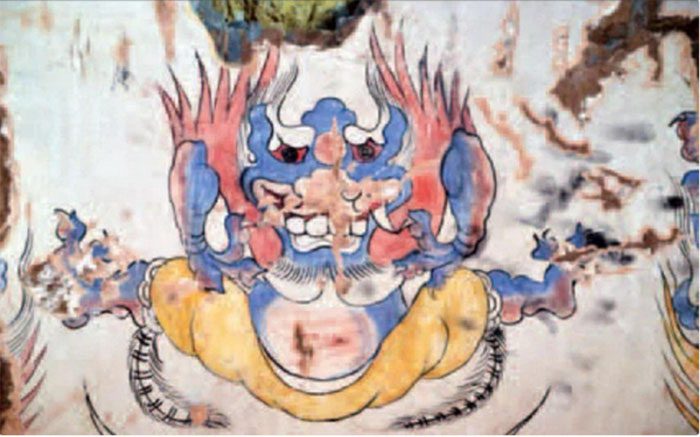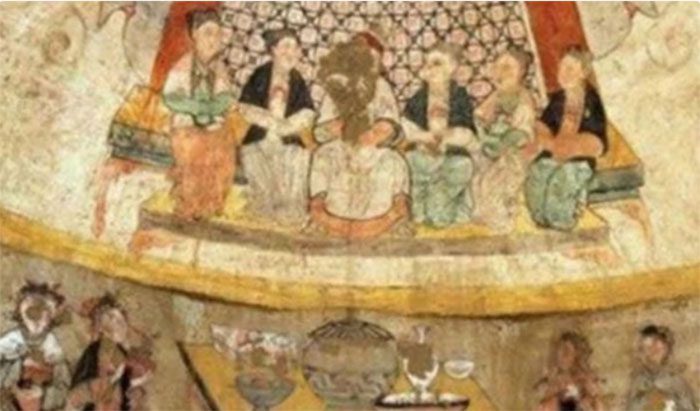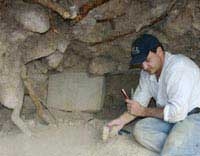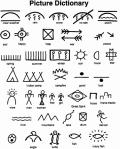The Reason for the Presence of the “Green Monster” in Ancient Tombs Remains Unexplained.
In spring 2013, an ancient tomb was discovered in the ancient city of Tanchao, Shanxi Province, China. A team of archaeologists from the Shanxi Archaeological Institute was dispatched to investigate, but the tomb was not excavated until 2014 due to various reasons.
Upon opening the tomb, the experts found it severely vandalized and damaged by tomb raiders. The body of the tomb’s owner was also missing. Most of the tomb’s treasures had been stolen, leaving only a few fragments of the coffin behind.
The tomb is quite large, so some artifacts remained untouched. As the archaeologists delved deeper, they discovered that certain pathways and corridors within the ancient tomb had not been plundered.

The mural depicting the “green monster” in the ancient tomb. (Photo: Sohu)
At this point, the archaeological team unexpectedly “stumbled upon” the “green monster.” The entire team was startled for a moment. They soon realized that the “monster” was actually a mural. This mural remained intact, indicating that it had been preserved quite well.
In addition to the “green monster,” the scientists also discovered several other murals depicting horse traders, hunters, and people working in a household. The images included both women and men, some enjoying a feast, and others playing musical instruments.
These colorful murals covered an area of 80m2 of the ancient tomb. After assessment, the archaeologists confirmed that this tomb is approximately 1,400 years old. They have yet to interpret what the vibrant green monster on the wall symbolizes.
However, the “green monster” and the other murals provide valuable information about social life, history, culture, and military affairs during that period. Archaeologists believe this is the final resting place of a powerful figure from that time.

Another mural in the ancient tomb. (Photo: Sohu).
Previously, Chinese archaeologists had discovered many ancient tombs with rare murals.
In 2013, archaeologists found an exceptionally well-preserved tomb in Shuozhou city, which contained the remains of a military commander and his wife from around 1,500 years ago.
In January 2015, another tomb was discovered after rain caused a landslide on a hillside in the region. This tomb is believed to date back to the Yuan Dynasty, about 700 years ago.
At the end of 2015, archaeologists working at the Shimao site from the Neolithic period also discovered fragments of murals. This could indicate that the basic process of creating murals in China may have existed around 4,000 years ago.
- New Discovery on Longevity: Reducing Food Intake by 30% May Extend Life by 20 Years
- This is the laziest and most cunning insect on the planet, demanding food without working
- While entering the forest to admire the trees, a man unexpectedly encounters a ‘divine bird’ that appears once every 155 years





















































